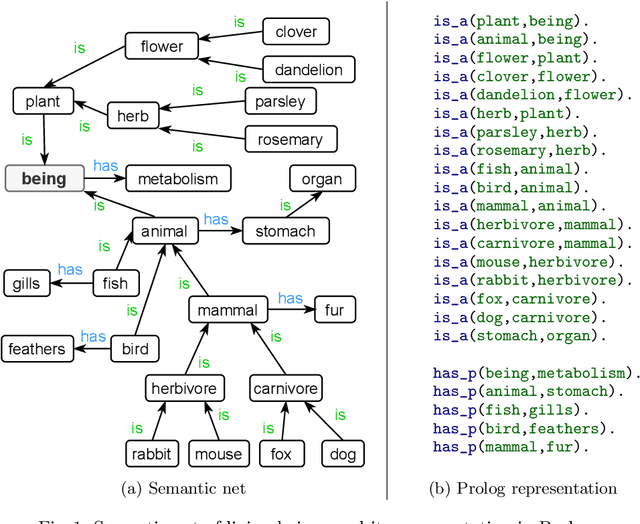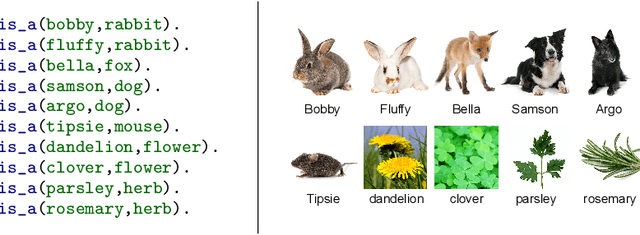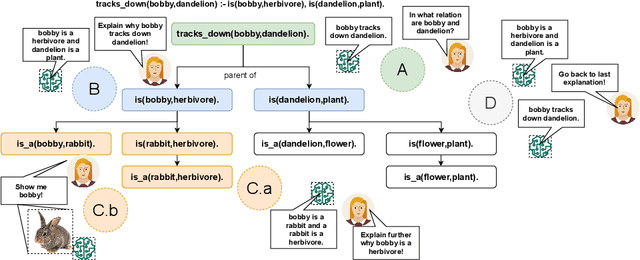Bettina Finzel
When a Relation Tells More Than a Concept: Exploring and Evaluating Classifier Decisions with CoReX
May 02, 2024Abstract:Explanations for Convolutional Neural Networks (CNNs) based on relevance of input pixels might be too unspecific to evaluate which and how input features impact model decisions. Especially in complex real-world domains like biomedicine, the presence of specific concepts (e.g., a certain type of cell) and of relations between concepts (e.g., one cell type is next to another) might be discriminative between classes (e.g., different types of tissue). Pixel relevance is not expressive enough to convey this type of information. In consequence, model evaluation is limited and relevant aspects present in the data and influencing the model decisions might be overlooked. This work presents a novel method to explain and evaluate CNN models, which uses a concept- and relation-based explainer (CoReX). It explains the predictive behavior of a model on a set of images by masking (ir-)relevant concepts from the decision-making process and by constraining relations in a learned interpretable surrogate model. We test our approach with several image data sets and CNN architectures. Results show that CoReX explanations are faithful to the CNN model in terms of predictive outcomes. We further demonstrate that CoReX is a suitable tool for evaluating CNNs supporting identification and re-classification of incorrect or ambiguous classifications.
Explaining with Attribute-based and Relational Near Misses: An Interpretable Approach to Distinguishing Facial Expressions of Pain and Disgust
Aug 27, 2023

Abstract:Explaining concepts by contrasting examples is an efficient and convenient way of giving insights into the reasons behind a classification decision. This is of particular interest in decision-critical domains, such as medical diagnostics. One particular challenging use case is to distinguish facial expressions of pain and other states, such as disgust, due to high similarity of manifestation. In this paper, we present an approach for generating contrastive explanations to explain facial expressions of pain and disgust shown in video sequences. We implement and compare two approaches for contrastive explanation generation. The first approach explains a specific pain instance in contrast to the most similar disgust instance(s) based on the occurrence of facial expressions (attributes). The second approach takes into account which temporal relations hold between intervals of facial expressions within a sequence (relations). The input to our explanation generation approach is the output of an interpretable rule-based classifier for pain and disgust.We utilize two different similarity metrics to determine near misses and far misses as contrasting instances. Our results show that near miss explanations are shorter than far miss explanations, independent from the applied similarity metric. The outcome of our evaluation indicates that pain and disgust can be distinguished with the help of temporal relations. We currently plan experiments to evaluate how the explanations help in teaching concepts and how they could be enhanced by further modalities and interaction.
CorrLoss: Integrating Co-Occurrence Domain Knowledge for Affect Recognition
Oct 31, 2022Abstract:Neural networks are widely adopted, yet the integration of domain knowledge is still underutilized. We propose to integrate domain knowledge about co-occurring facial movements as a constraint in the loss function to enhance the training of neural networks for affect recognition. As the co-ccurrence patterns tend to be similar across datasets, applying our method can lead to a higher generalizability of models and a lower risk of overfitting. We demonstrate this by showing performance increases in cross-dataset testing for various datasets. We also show the applicability of our method for calibrating neural networks to different facial expressions.
Explanation as a process: user-centric construction of multi-level and multi-modal explanations
Oct 07, 2021



Abstract:In the last years, XAI research has mainly been concerned with developing new technical approaches to explain deep learning models. Just recent research has started to acknowledge the need to tailor explanations to different contexts and requirements of stakeholders. Explanations must not only suit developers of models, but also domain experts as well as end users. Thus, in order to satisfy different stakeholders, explanation methods need to be combined. While multi-modal explanations have been used to make model predictions more transparent, less research has focused on treating explanation as a process, where users can ask for information according to the level of understanding gained at a certain point in time. Consequently, an opportunity to explore explanations on different levels of abstraction should be provided besides multi-modal explanations. We present a process-based approach that combines multi-level and multi-modal explanations. The user can ask for textual explanations or visualizations through conversational interaction in a drill-down manner. We use Inductive Logic Programming, an interpretable machine learning approach, to learn a comprehensible model. Further, we present an algorithm that creates an explanatory tree for each example for which a classifier decision is to be explained. The explanatory tree can be navigated by the user to get answers of different levels of detail. We provide a proof-of-concept implementation for concepts induced from a semantic net about living beings.
XAI Method Properties: A (Meta-)study
May 15, 2021



Abstract:In the meantime, a wide variety of terminologies, motivations, approaches and evaluation criteria have been developed within the scope of research on explainable artificial intelligence (XAI). Many taxonomies can be found in the literature, each with a different focus, but also showing many points of overlap. In this paper, we summarize the most cited and current taxonomies in a meta-analysis in order to highlight the essential aspects of the state-of-the-art in XAI. We also present and add terminologies as well as concepts from a large number of survey articles on the topic. Last but not least, we illustrate concepts from the higher-level taxonomy with more than 50 example methods, which we categorize accordingly, thus providing a wide-ranging overview of aspects of XAI and paving the way for use case-appropriate as well as context-specific subsequent research.
Uncovering the Bias in Facial Expressions
Nov 23, 2020



Abstract:Over the past decades the machine and deep learning community has celebrated great achievements in challenging tasks such as image classification. The deep architecture of artificial neural networks together with the plenitude of available data makes it possible to describe highly complex relations. Yet, it is still impossible to fully capture what the deep learning model has learned and to verify that it operates fairly and without creating bias, especially in critical tasks, for instance those arising in the medical field. One example for such a task is the detection of distinct facial expressions, called Action Units, in facial images. Considering this specific task, our research aims to provide transparency regarding bias, specifically in relation to gender and skin color. We train a neural network for Action Unit classification and analyze its performance quantitatively based on its accuracy and qualitatively based on heatmaps. A structured review of our results indicates that we are able to detect bias. Even though we cannot conclude from our results that lower classification performance emerged solely from gender and skin color bias, these biases must be addressed, which is why we end by giving suggestions on how the detected bias can be avoided.
Verifying Deep Learning-based Decisions for Facial Expression Recognition
Feb 14, 2020



Abstract:Neural networks with high performance can still be biased towards non-relevant features. However, reliability and robustness is especially important for high-risk fields such as clinical pain treatment. We therefore propose a verification pipeline, which consists of three steps. First, we classify facial expressions with a neural network. Next, we apply layer-wise relevance propagation to create pixel-based explanations. Finally, we quantify these visual explanations based on a bounding-box method with respect to facial regions. Although our results show that the neural network achieves state-of-the-art results, the evaluation of the visual explanations reveals that relevant facial regions may not be considered.
 Add to Chrome
Add to Chrome Add to Firefox
Add to Firefox Add to Edge
Add to Edge